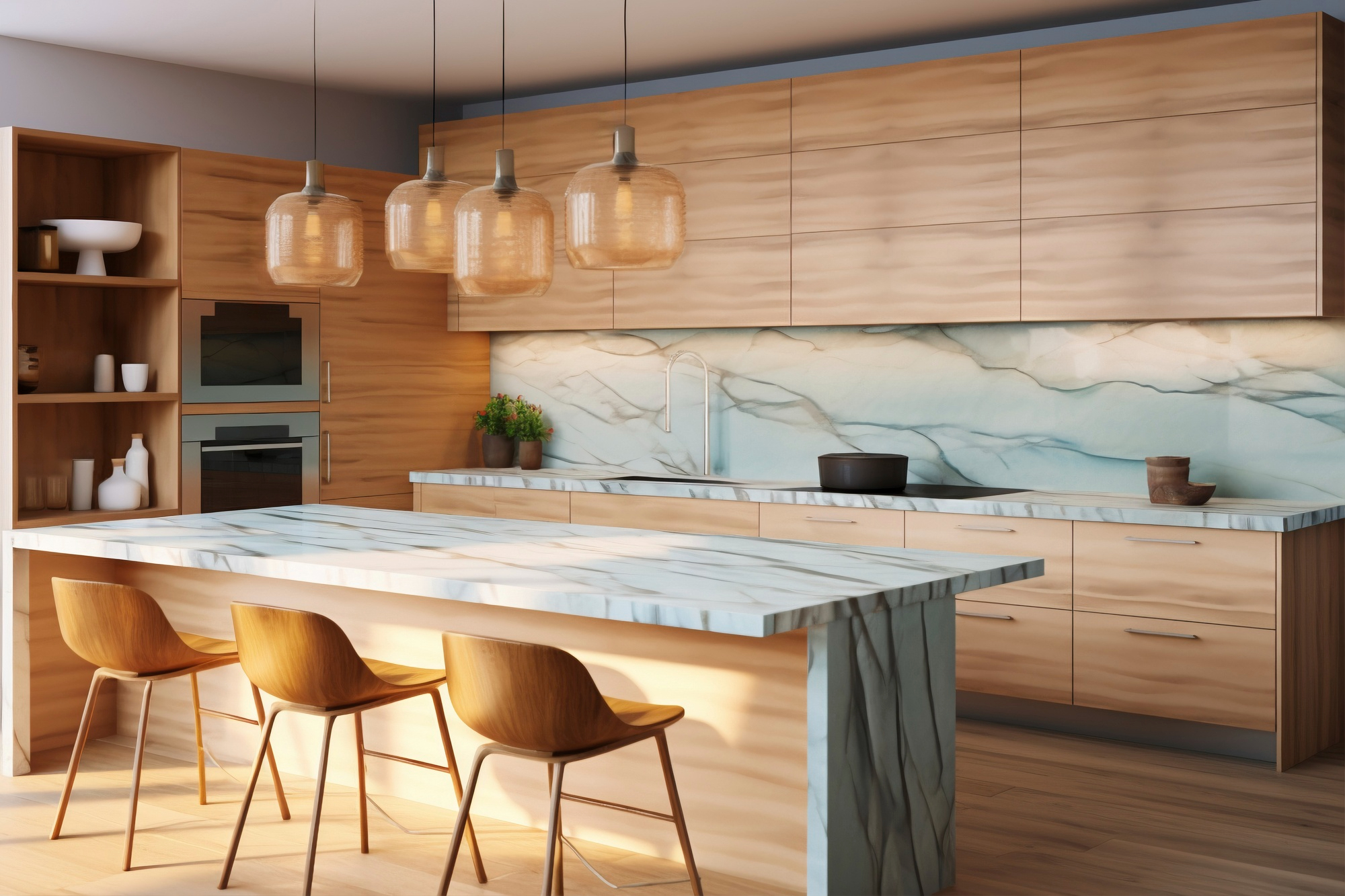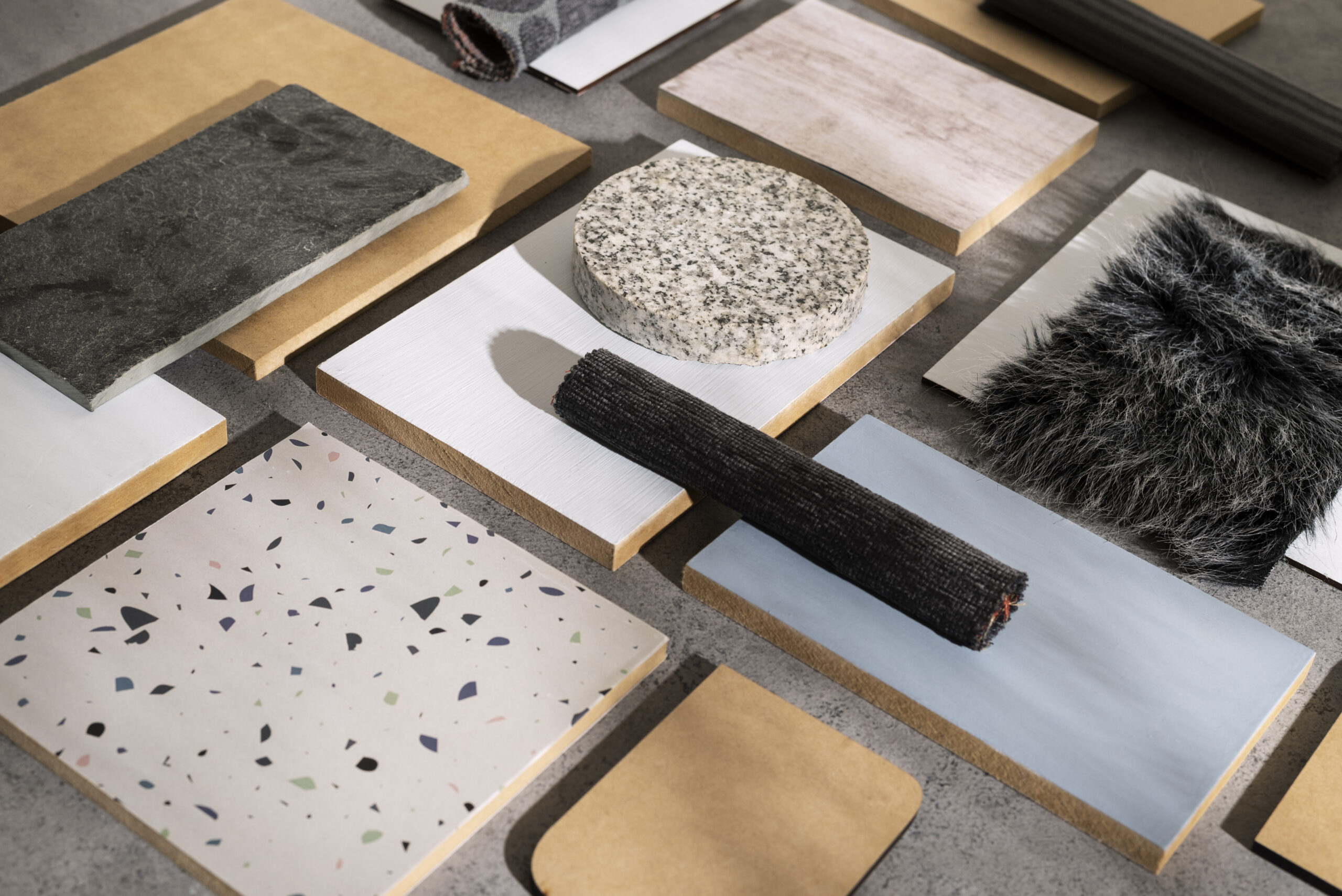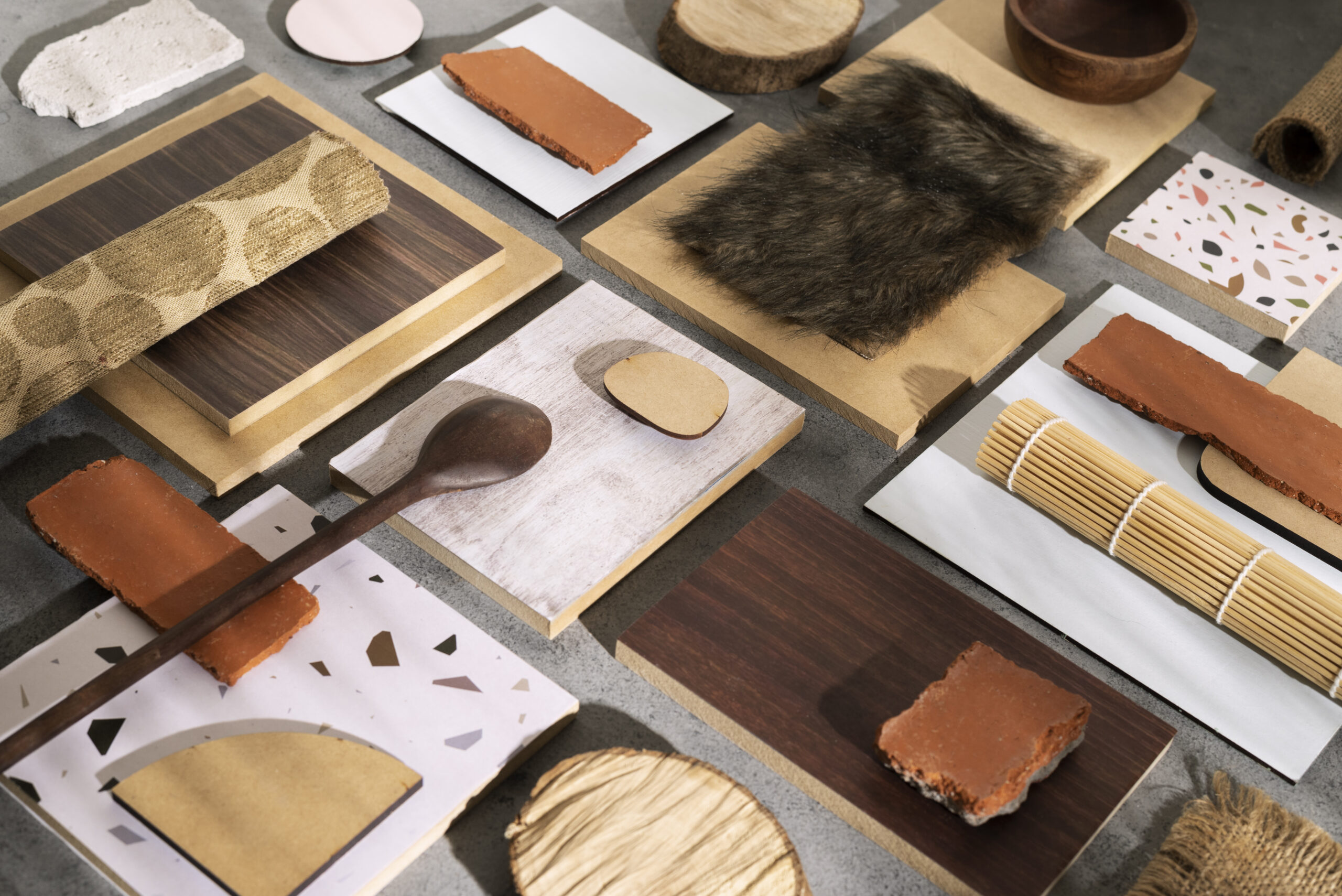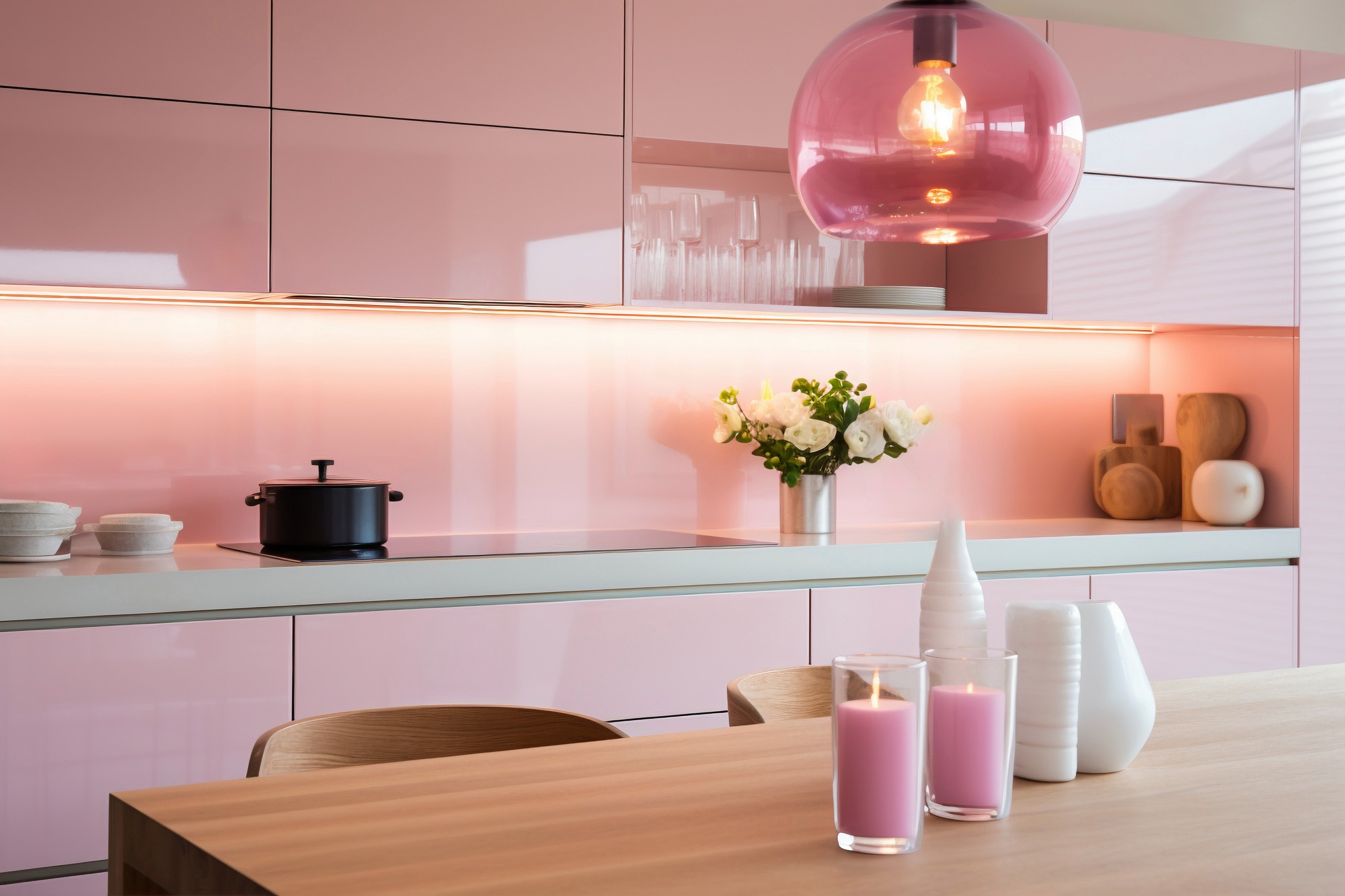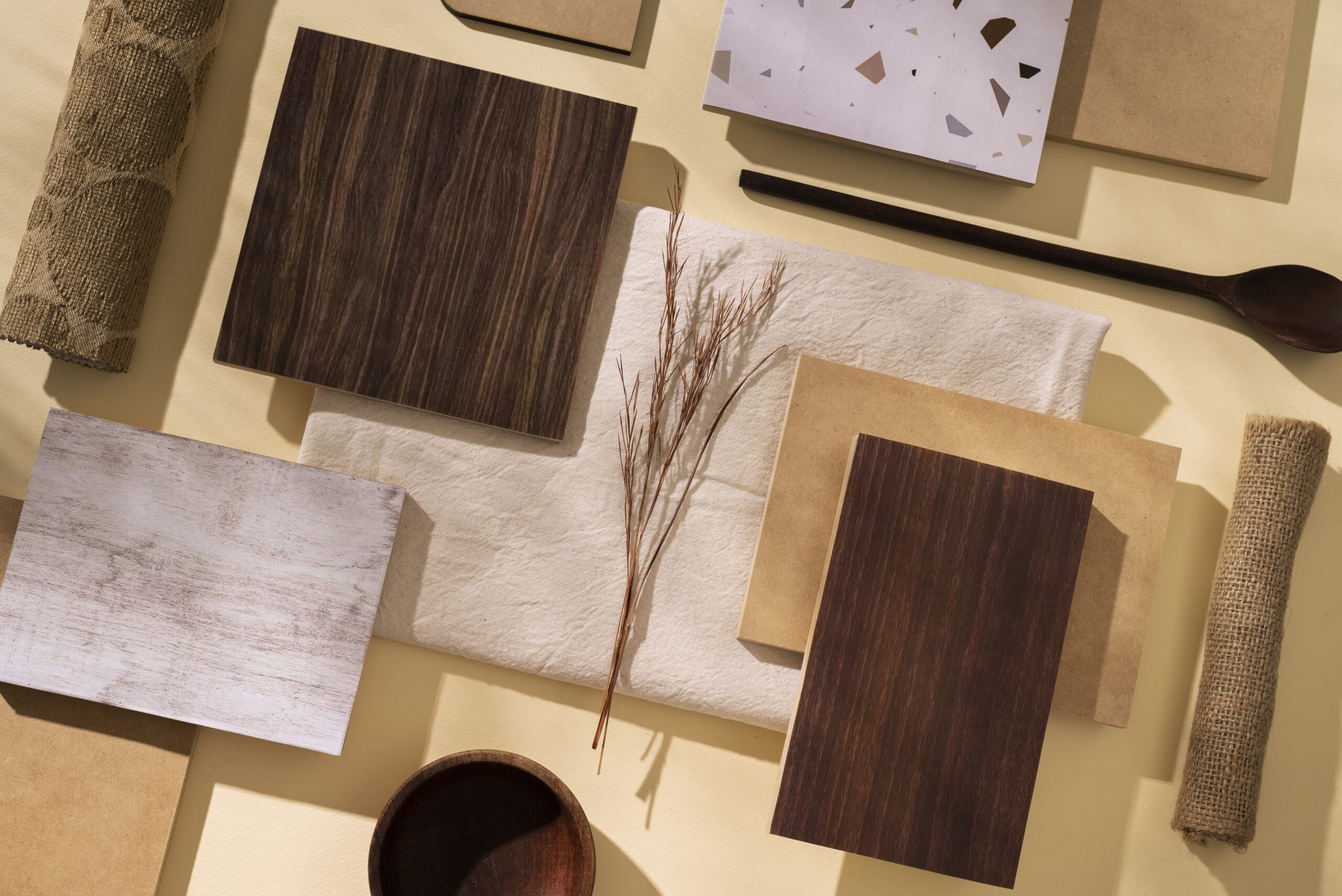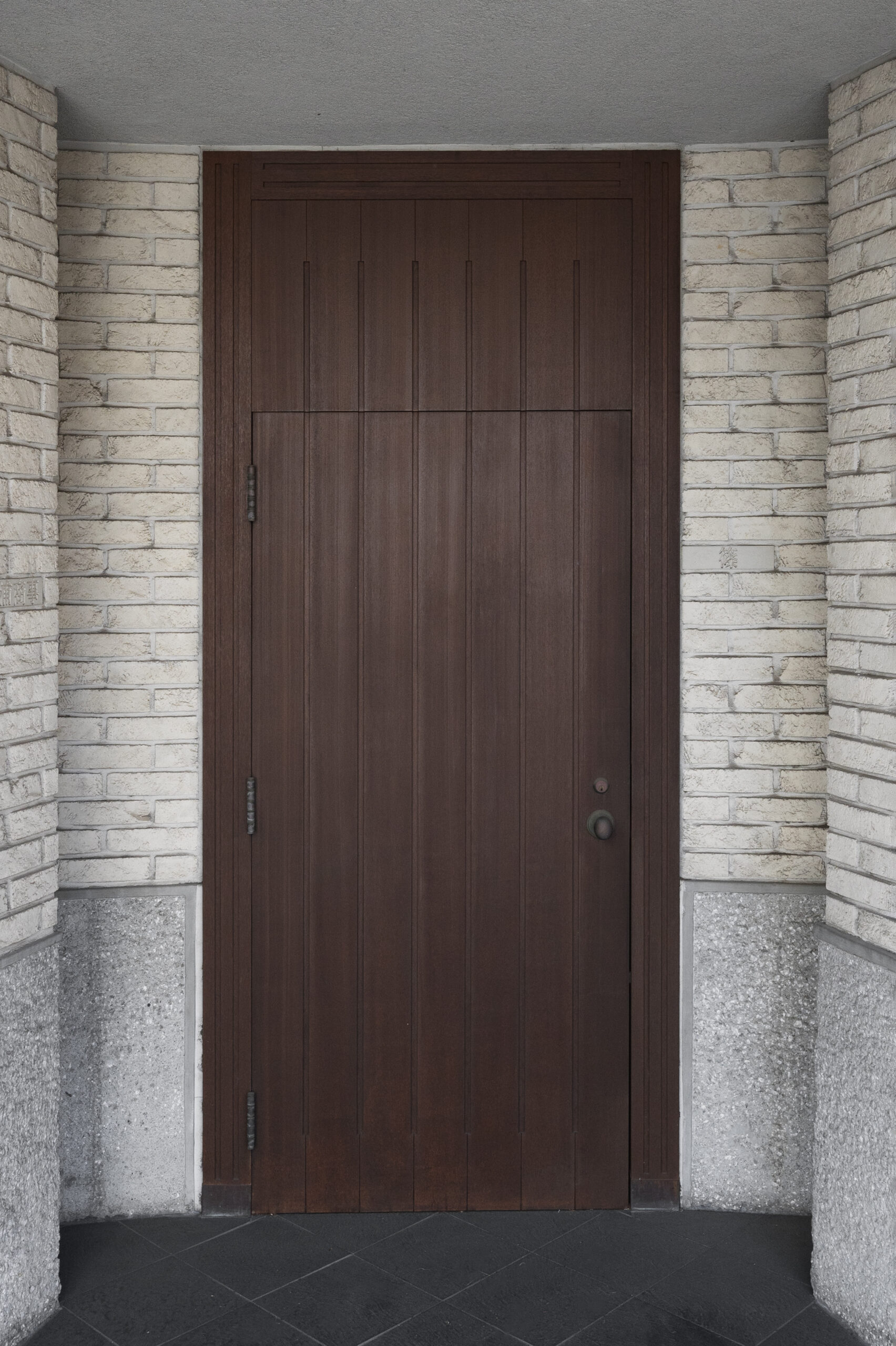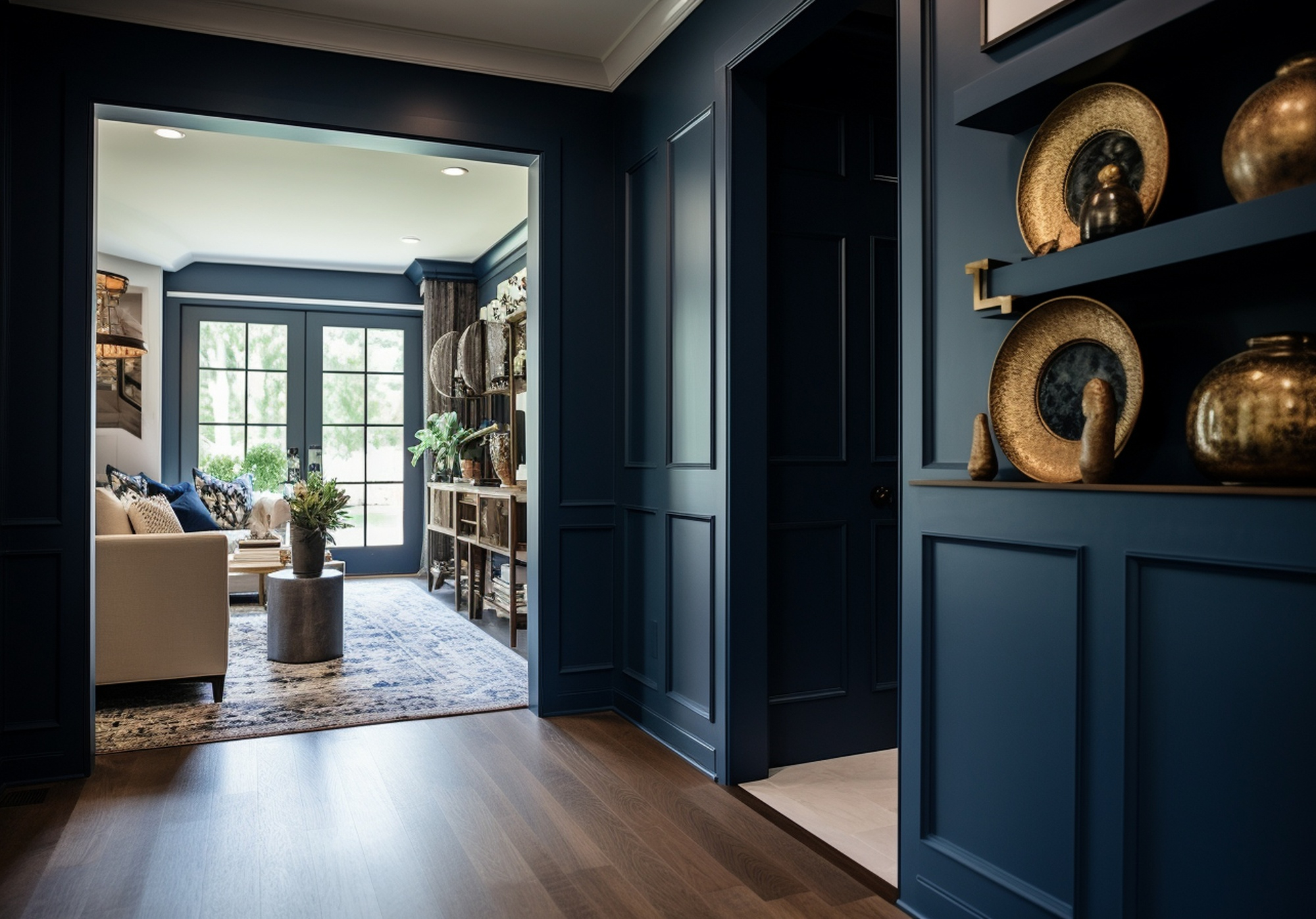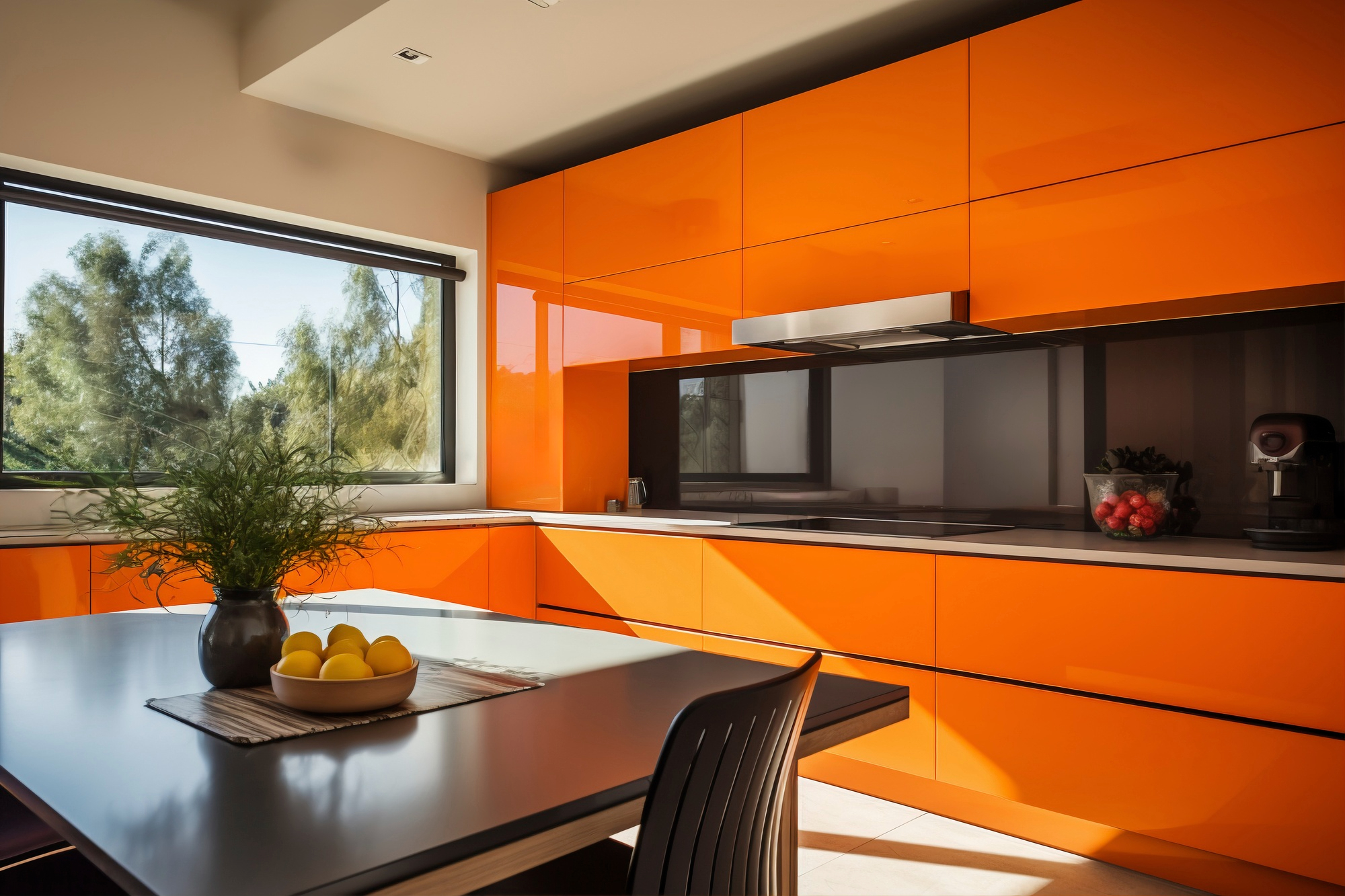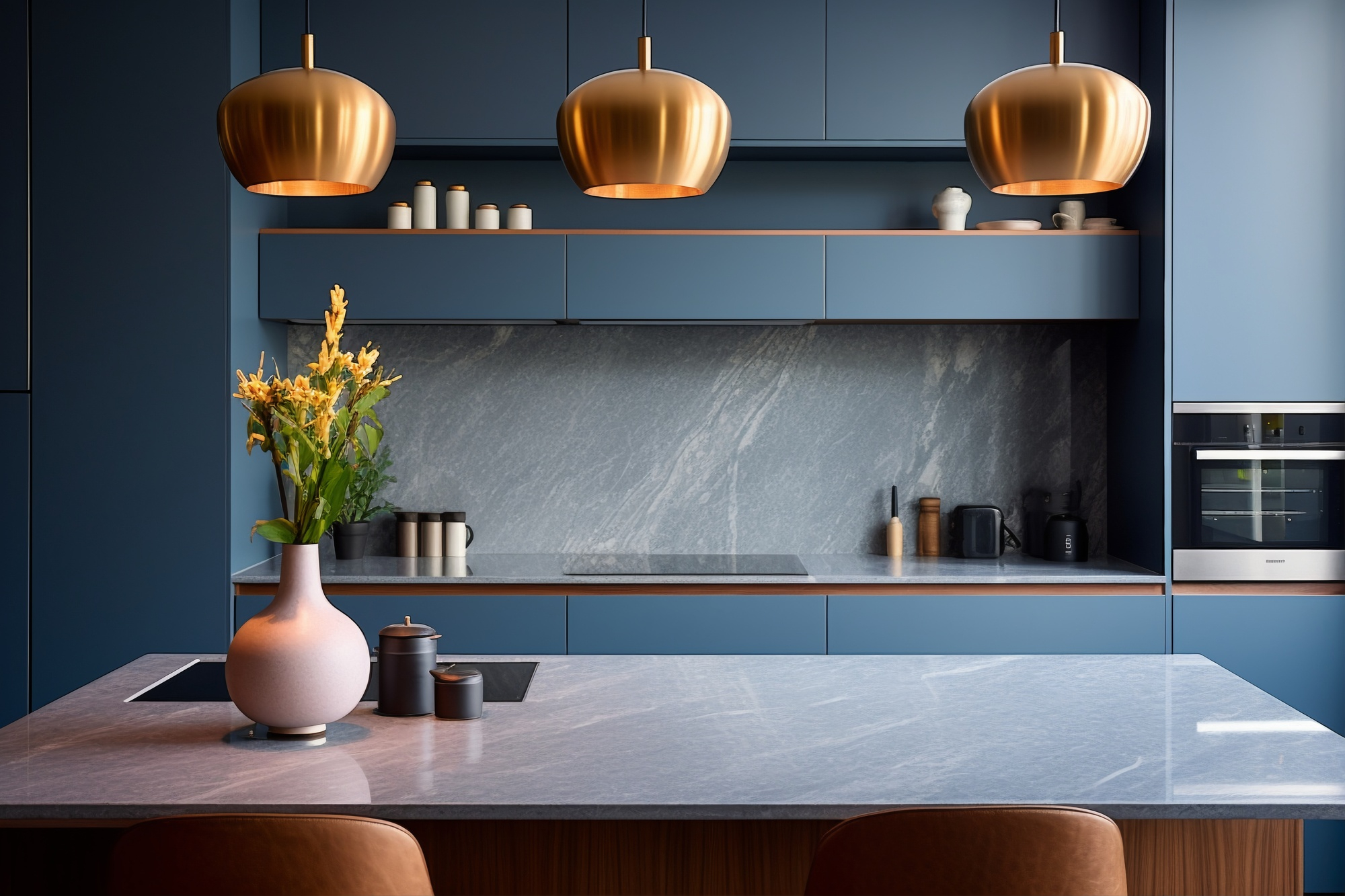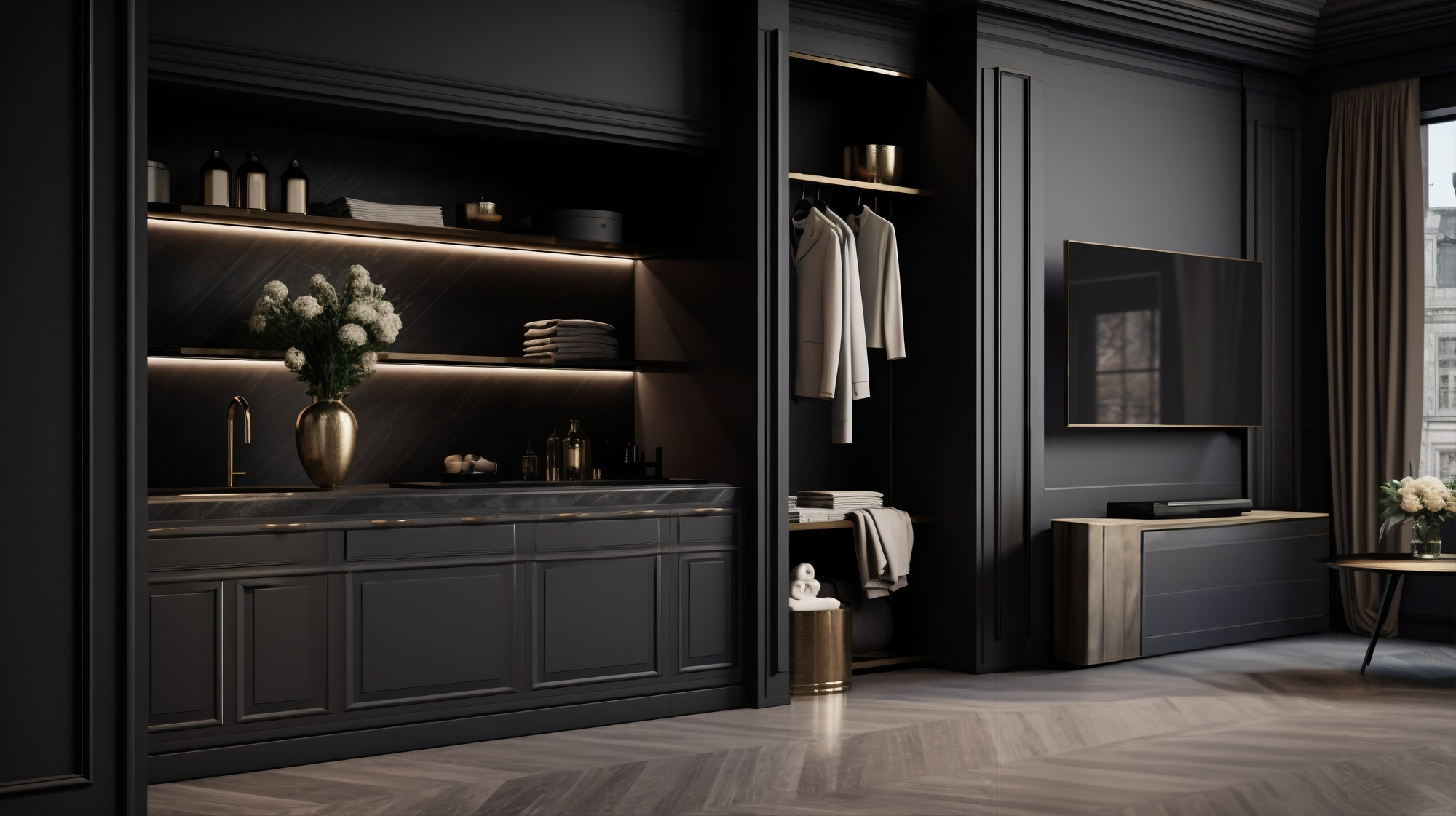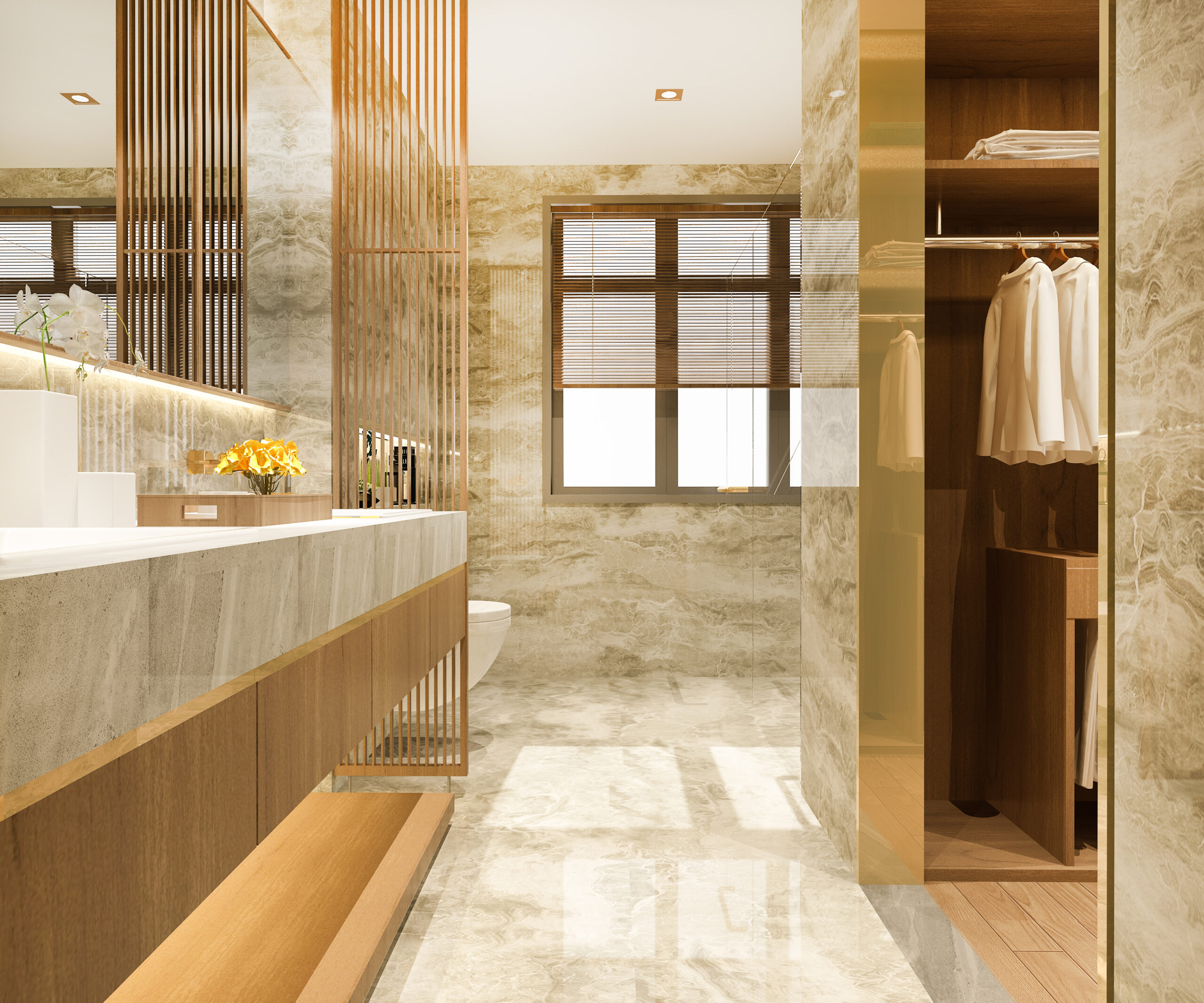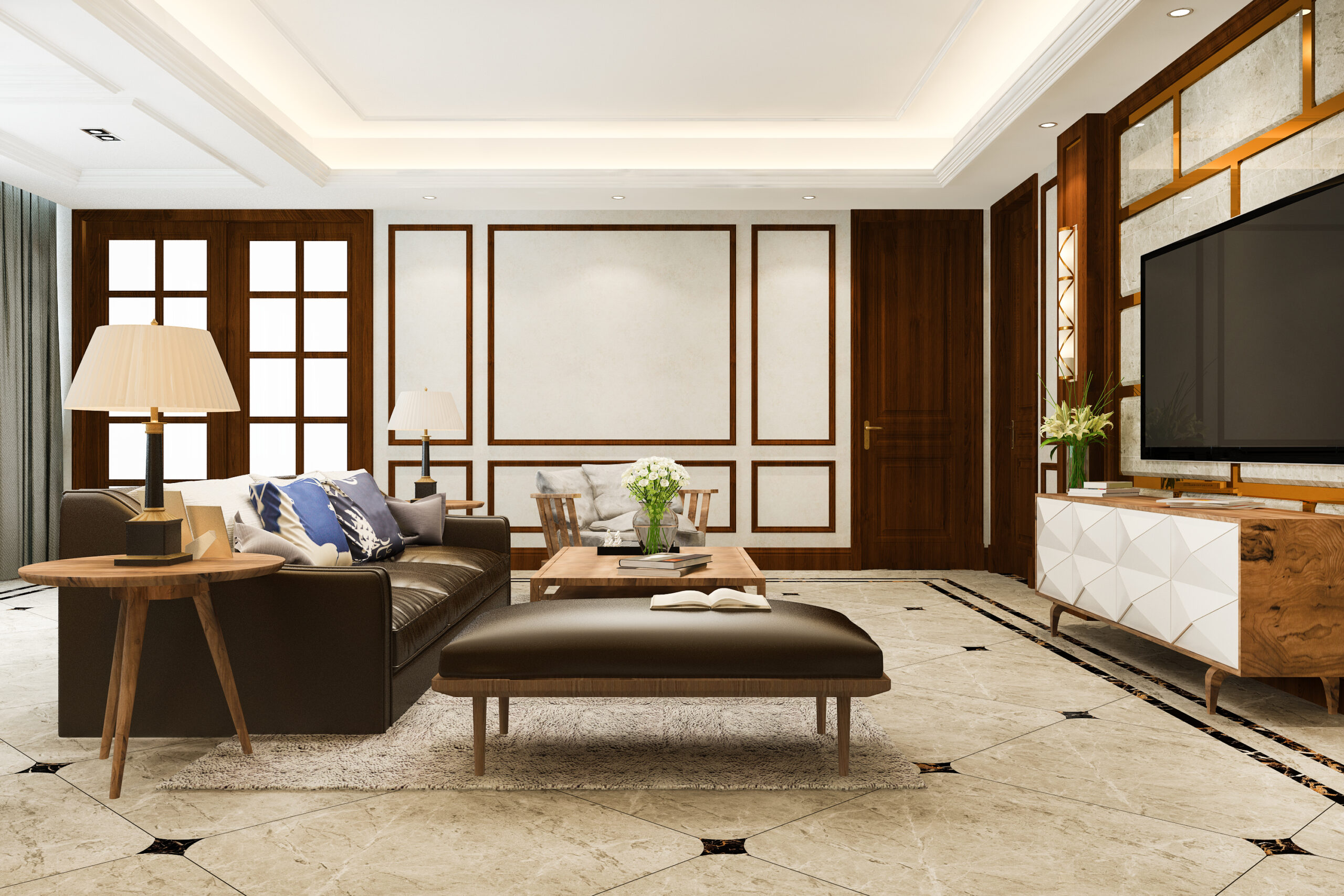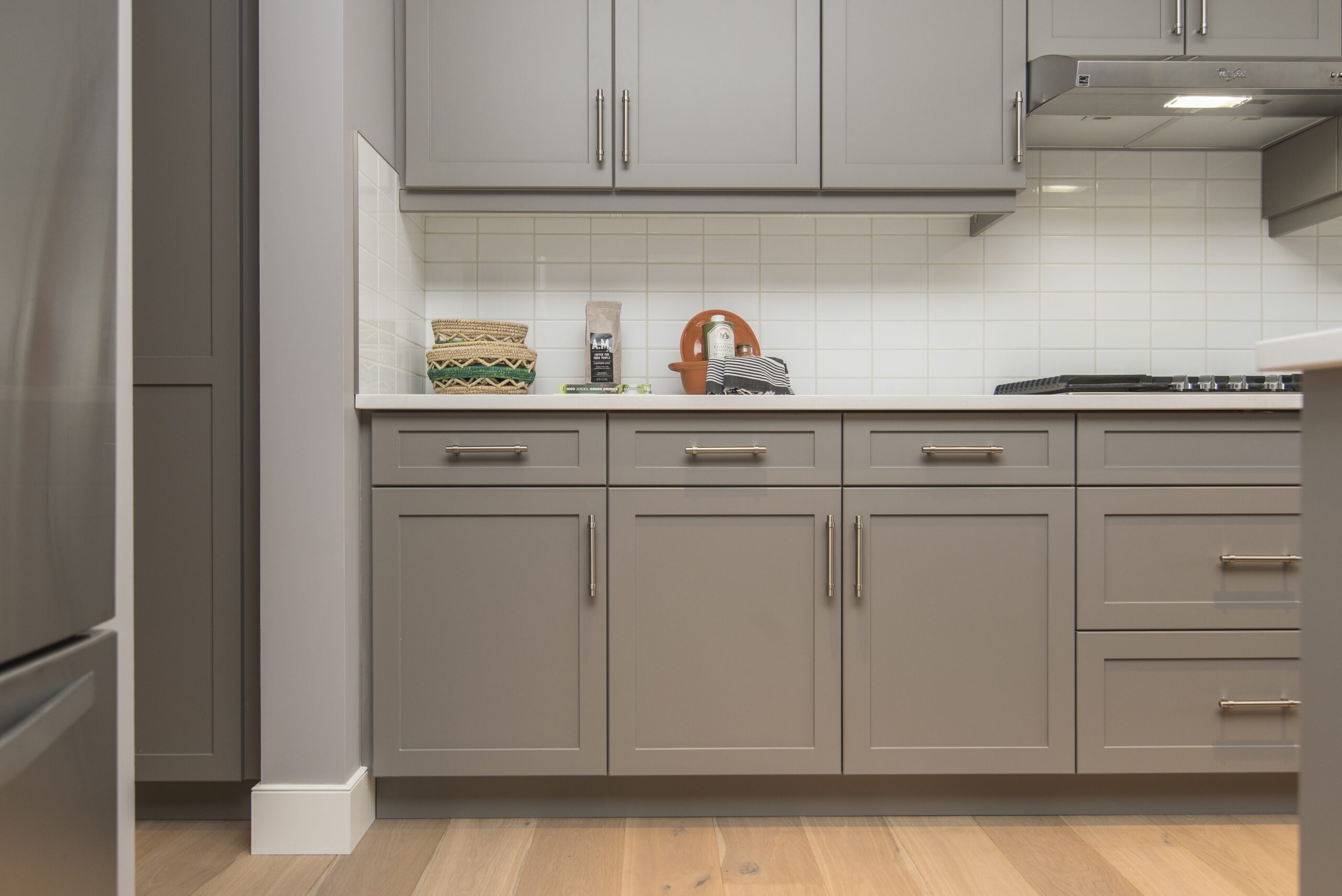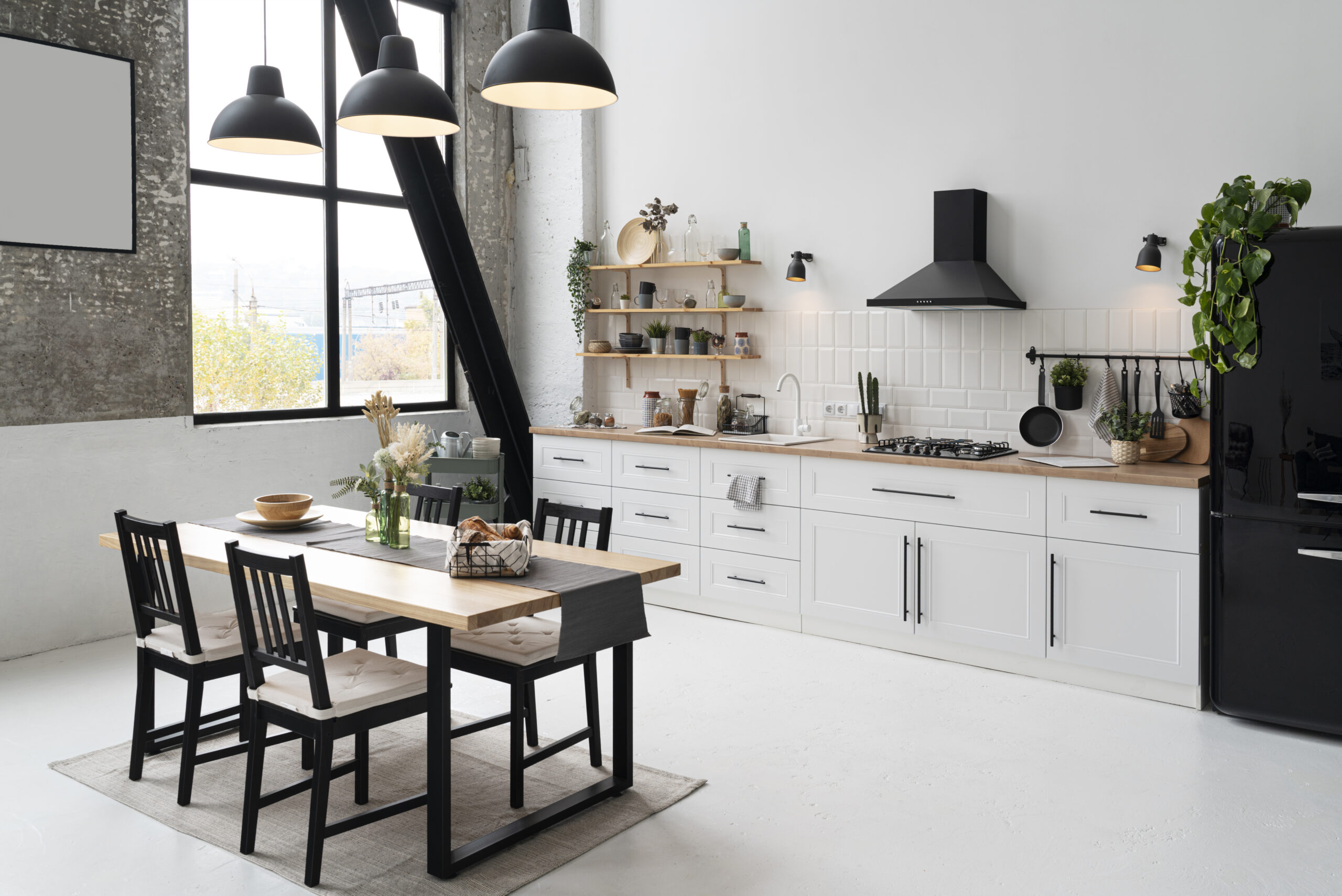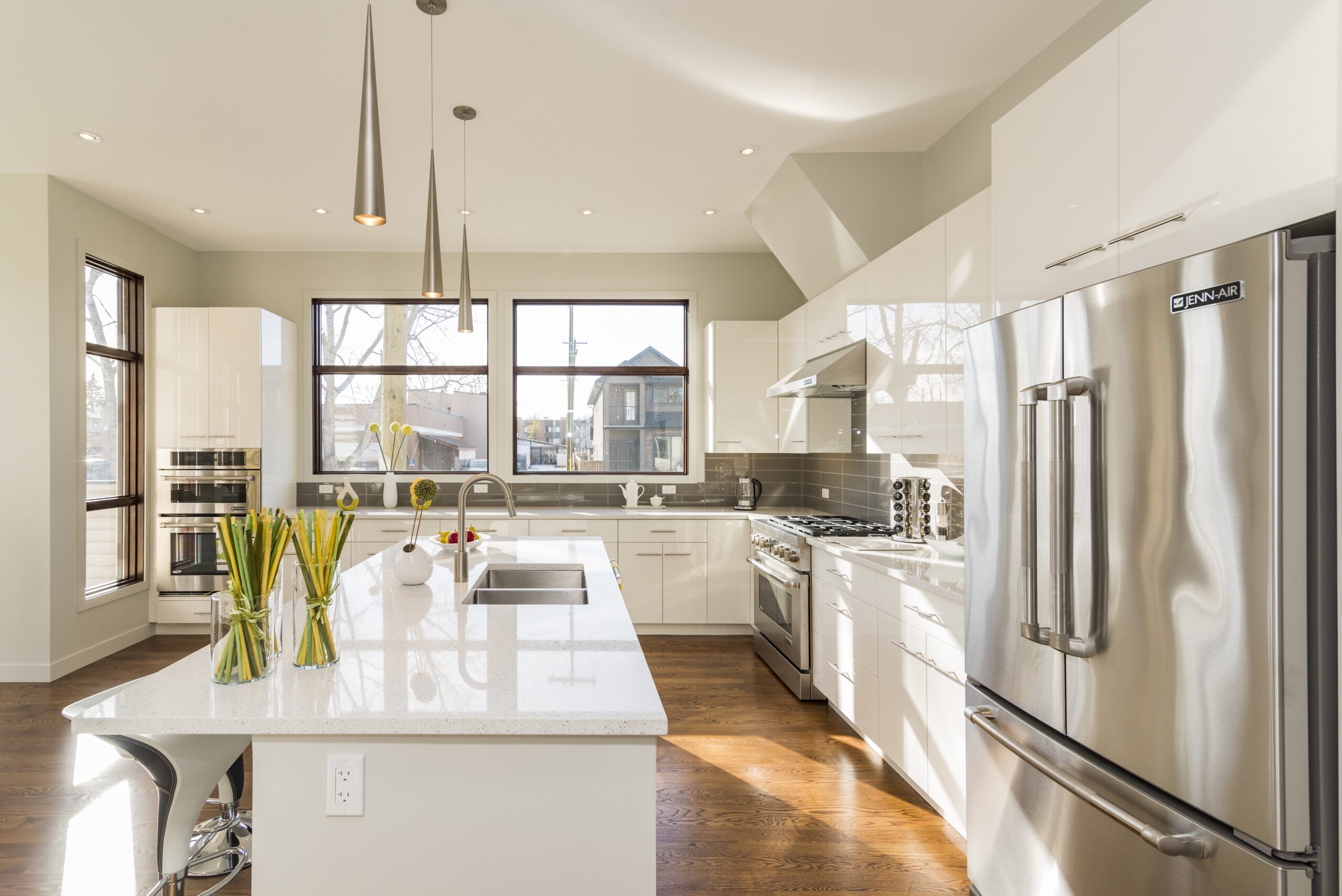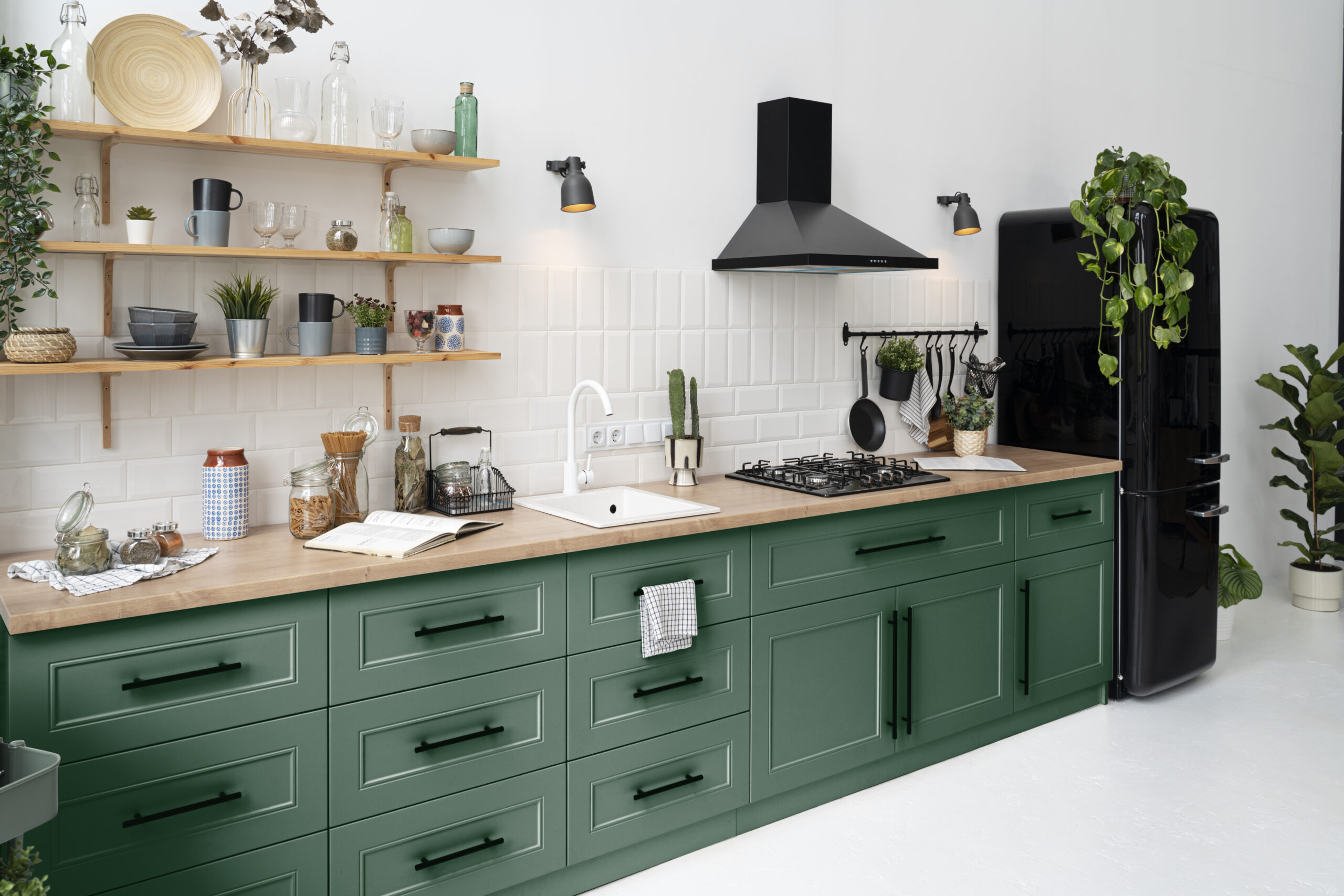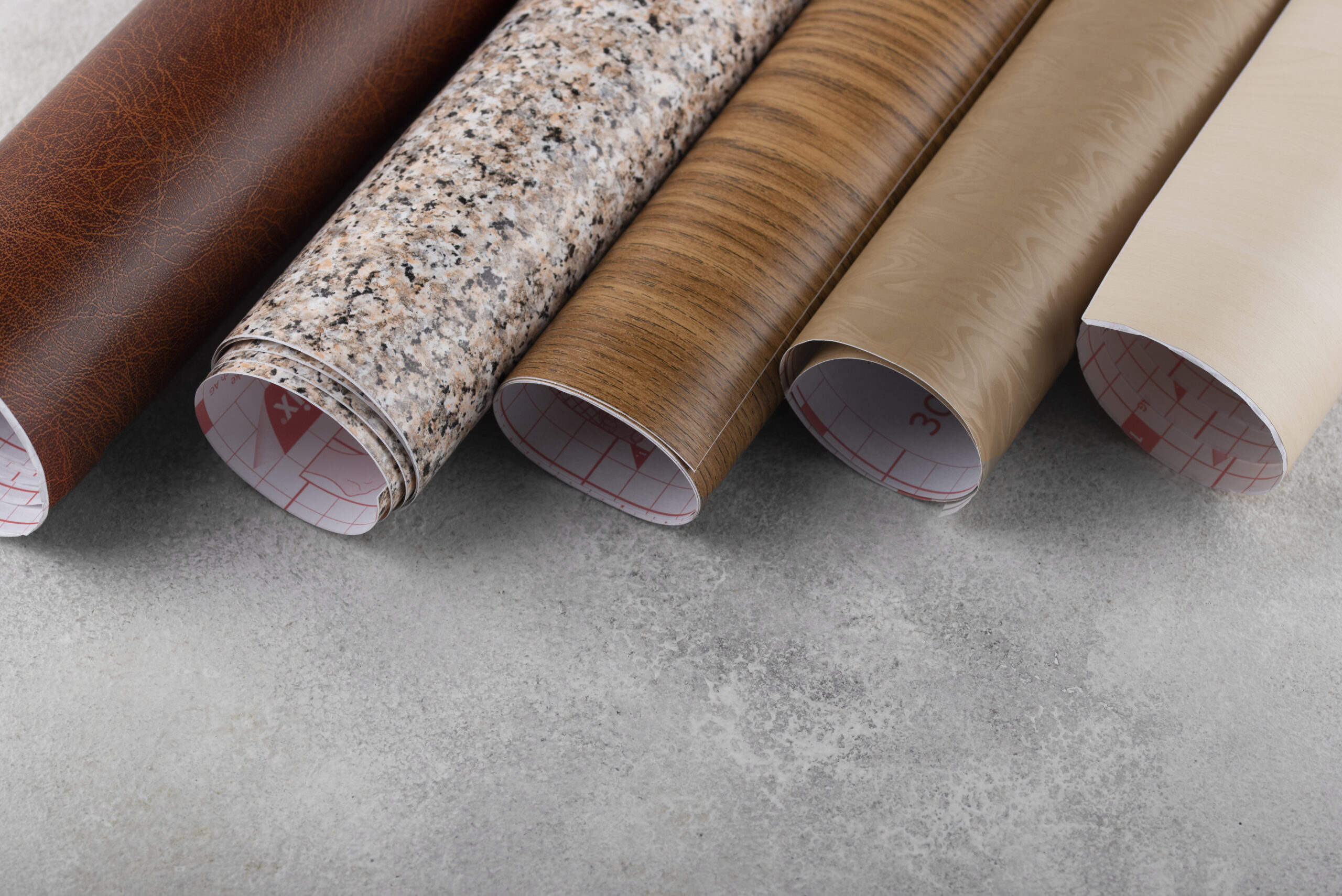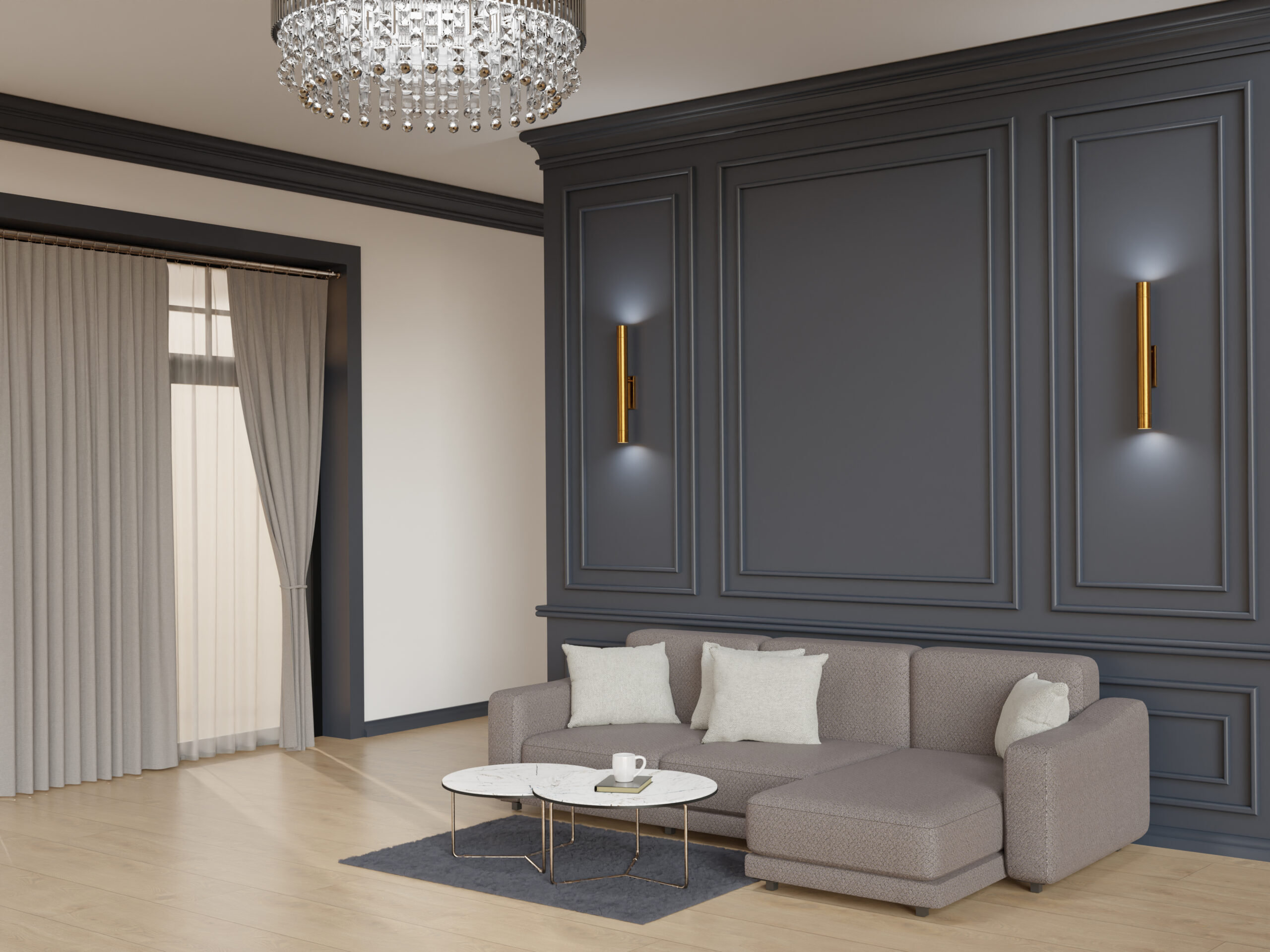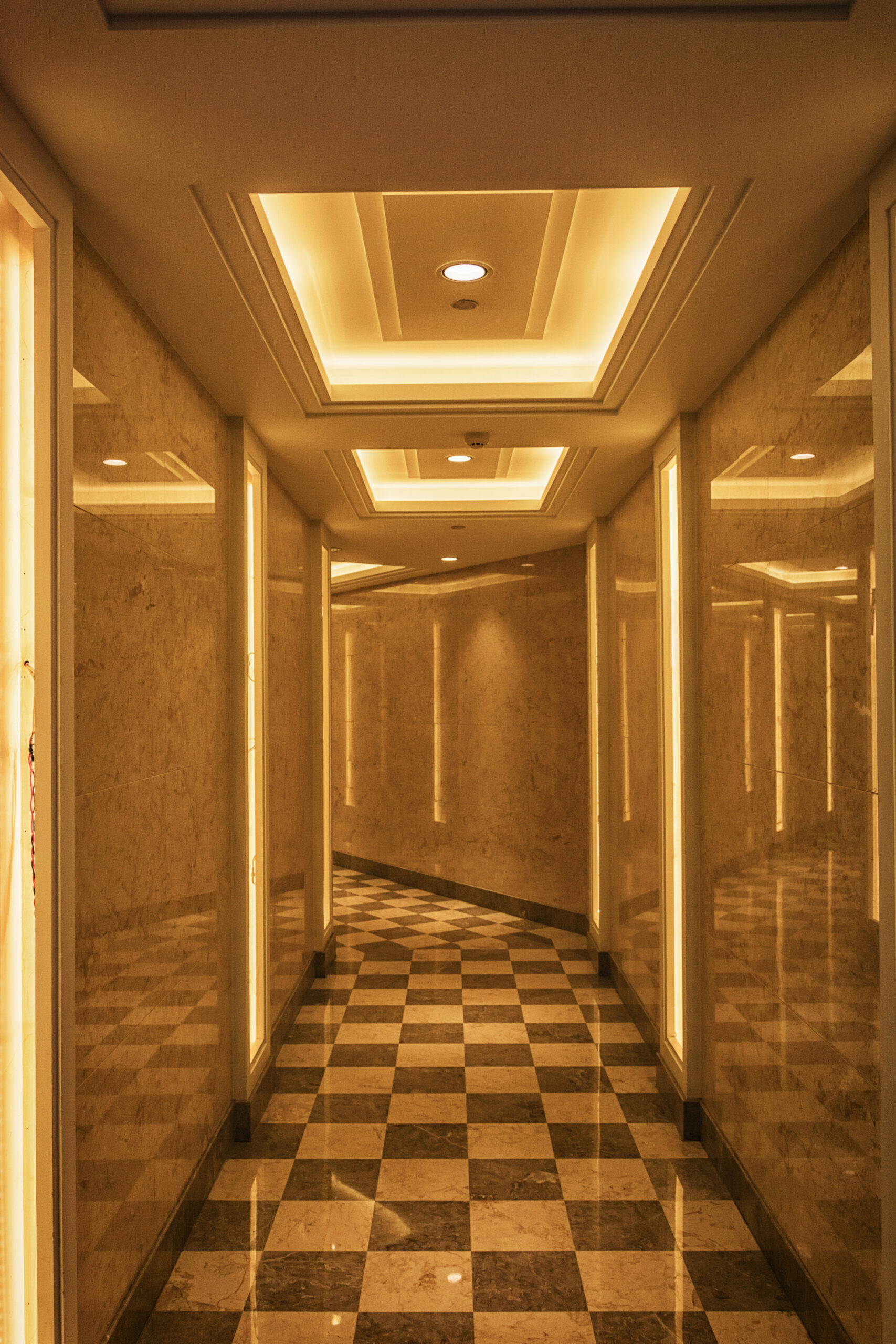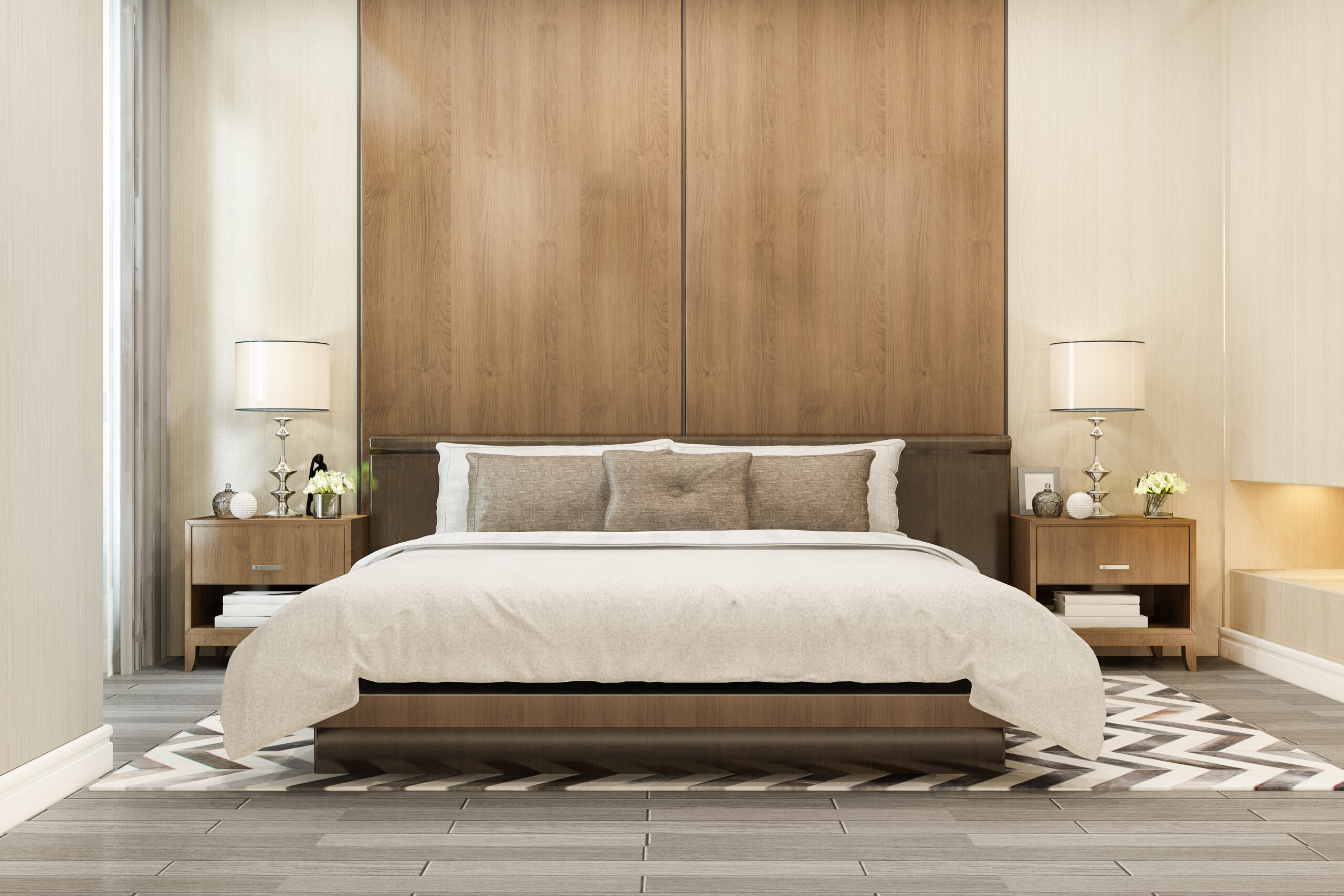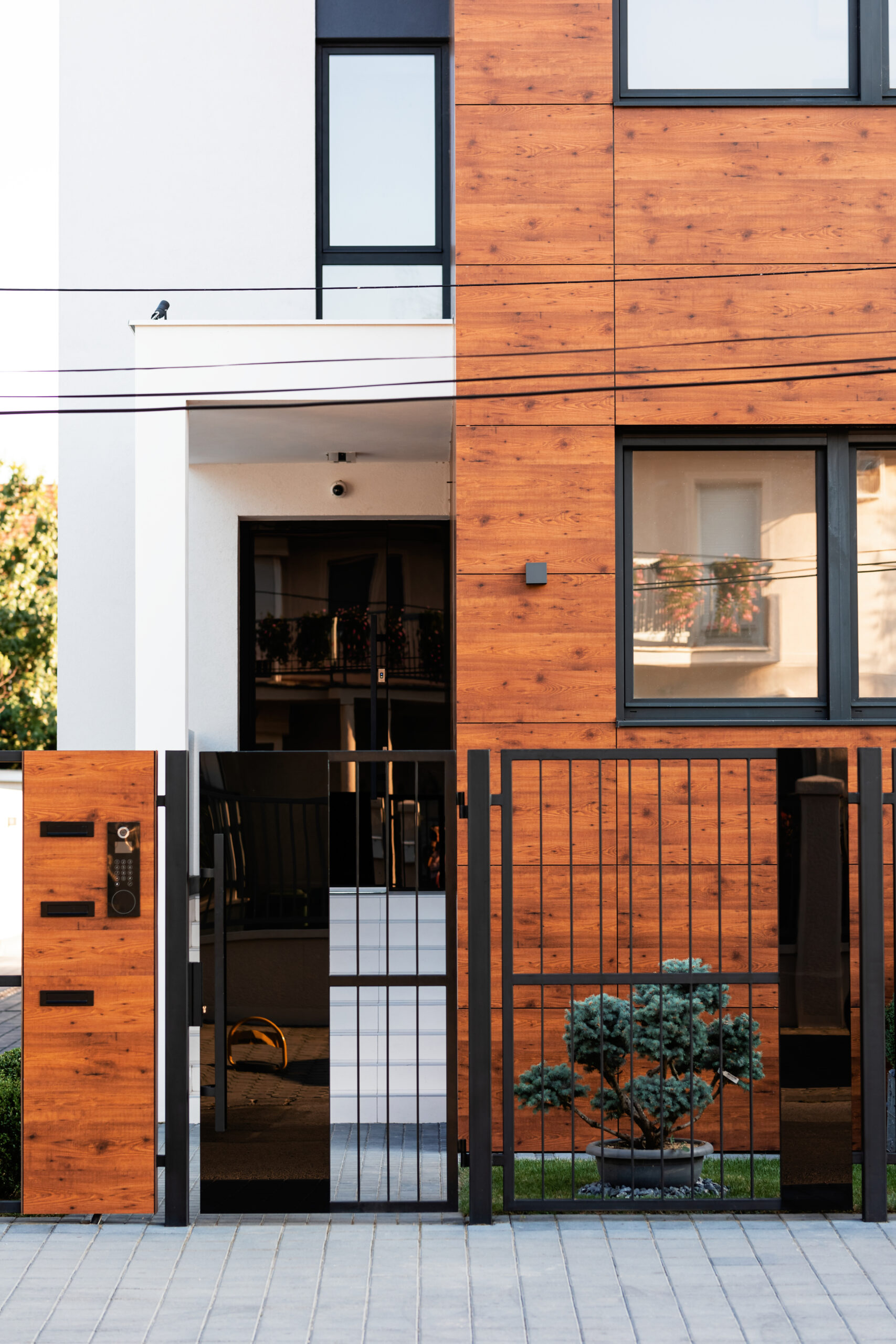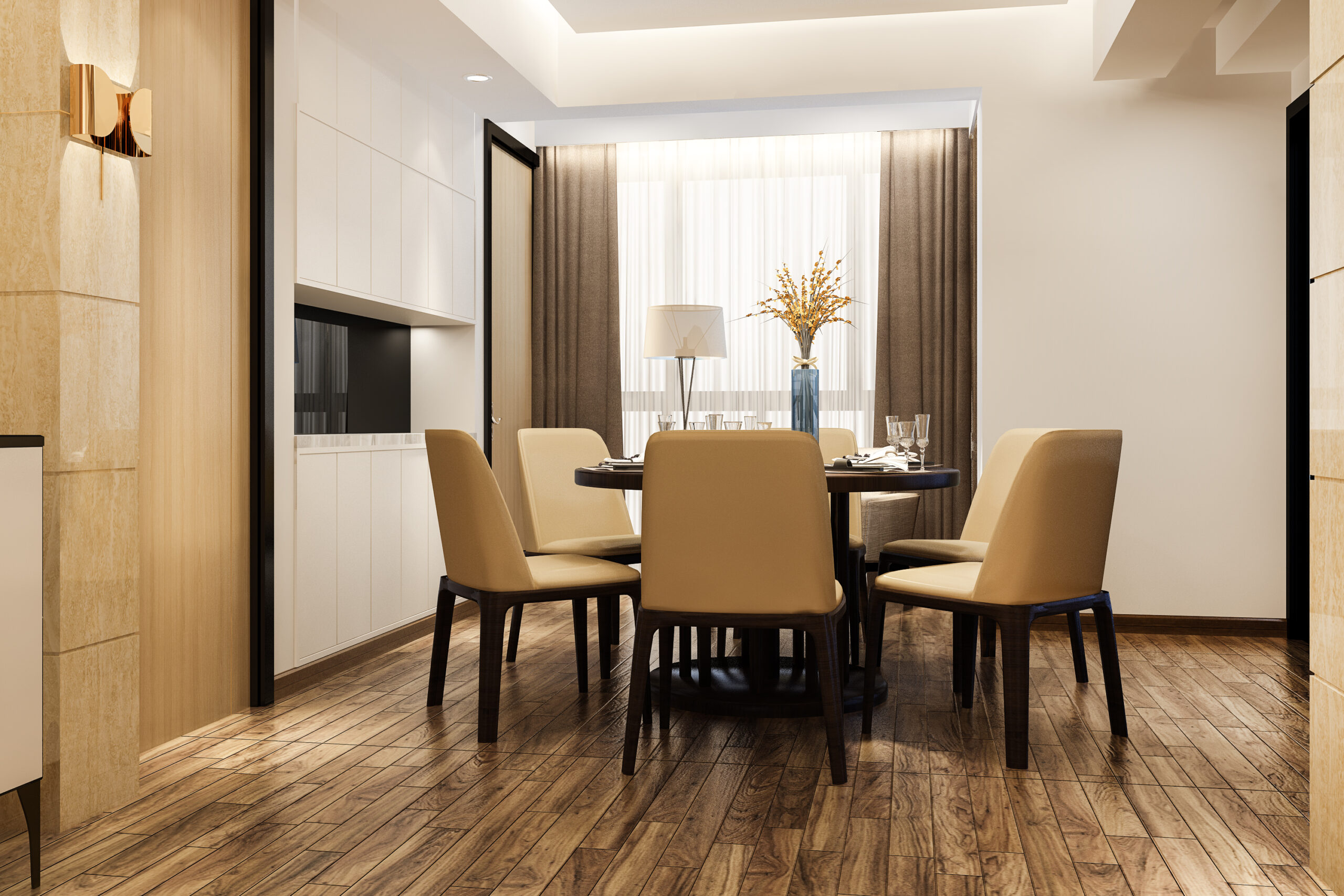Veneer Doors vs. Laminate Doors: Understanding the Key Differences
Veneer doors and laminate doors are popular choices for interior design, but they have distinct characteristics that cater to different preferences and requirements.
Veneer Doors:
- Veneer doors feature a thin layer of natural wood, typically sourced from trees like oak, walnut, or mahogany, adhered to a core material.
- Known for their elegant and authentic appearance, veneer doors showcase the unique grain patterns and textures of real wood.
- Veneer doors offer a warm and organic aesthetic, making them a favored option for classic and traditional interior designs.
- They can be stained or finished to enhance their beauty, allowing customization to match various decor styles.
- However, veneer doors may be more susceptible to damage from moisture and impact compared to laminate doors.
Laminate Doors:
- Laminate doors are constructed using layers of synthetic materials, typically composed of resin-impregnated paper.
- These doors come in a wide range of colors, patterns, and textures, including wood grain, stone, and abstract designs.
- Laminate doors are renowned for their durability and resistance to moisture, making them ideal for high-traffic areas and humid environments.
- They are easy to clean and maintain, as their smooth surface repels stains and dirt.
- Laminate doors are a versatile choice, suitable for modern, minimalist, and contemporary interior styles.
In summary, the main differences between veneer and laminate doors lie in their materials and appearances. Veneer doors offer a natural wood charm, while laminate doors provide durability and a broader array of design options. Choosing between them depends on your aesthetic preferences, maintenance requirements, and the specific demands of your interior space.
What are Laminate Doors and Veneer Doors?
Laminate doors are a type of interior door constructed using synthetic materials. They consist of a core made of particleboard or medium-density fiberboard (MDF) that is covered with a decorative layer of laminate. Laminate is a synthetic material created by fusing multiple layers of paper or resin together. The decorative layer of laminate can mimic various patterns, textures, and colors, including wood grain, stone, or solid colors. Laminate doors are known for their durability, resistance to scratches and moisture, and ease of maintenance. They offer a wide range of design options and can be a cost-effective alternative to natural wood doors. Laminate doors are commonly used in residential and commercial settings due to their versatility and practicality.
Veneer doors are a type of door that feature a real wood veneer, providing a distinct and authentic appearance. These doors showcase the natural grain and texture of the wood, highlighting its beauty and uniqueness. With various wood species available, such as oak, walnut, or mahogany, each veneer door brings its own colors, patterns, and characteristics to the surface. The natural variations and knots in the wood veneer add warmth and organic charm, creating visually appealing and richly textured doors. Veneer doors exude elegance and sophistication, making them a perfect choice for those who appreciate the natural beauty of real wood in their interior spaces.
Differences in Appearance Veneer Doors & Laminate Doors?
Veneer Doors:
Veneer doors are made from a thin layer of real wood, typically around 0.6 to 6 millimeters thick, which is bonded to a core material such as particleboard or medium-density fiberboard (MDF). The veneer used can be obtained from various wood species, including oak, maple, walnut, or cherry. During the manufacturing process, manufacturers slice or peel a log into thin sheets and apply them to the door’s surface using adhesive.
One of the main advantages of veneer doors is their natural and authentic appearance. The real wood veneer showcases the unique grain patterns and textures of the chosen wood species, providing an elegant and sophisticated look. You can stain or finish veneer doors to enhance their natural beauty, and they are available in different shades and finishes to match various interior styles.
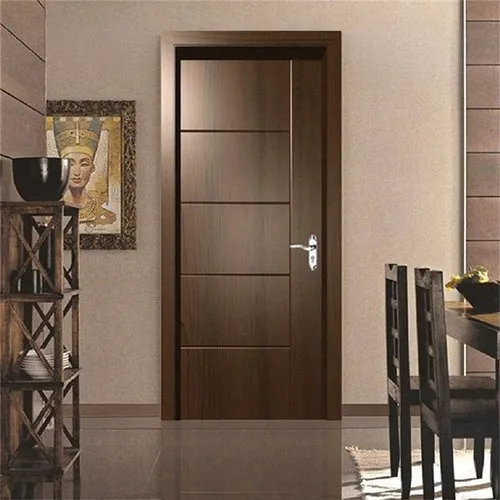
Laminate Doors:
In contrast, manufacturers produce laminate doors using synthetic materials. They consist of a core material, usually made of particleboard or MDF, covered with a decorative layer of laminate. Laminate consists of multiple layers of resin-saturated paper that manufacturers fuse together under high heat and pressure, creating a durable material. The decorative layer can mimic the appearance of different materials, including wood, stone, or metal.
Laminate doors offer a wide range of design options due to the vast variety of colors, patterns, and textures available. They can simulate the look of various wood grains, allowing for versatility in matching different interior aesthetics. They are less prone to warping or damage from moisture compared to solid wood or veneer doors.

Also Read:- Choosing The Perfect Kitchen Laminate
Differences in Durability and Maintenance veneer & laminate doors?
When considering the durability and maintenance of doors, there are important factors to consider for both veneer and laminate options.
Veneer Doors:
Durability: Veneer doors are generally less durable compared to laminate doors. The thin layer of real wood can be susceptible to scratches, dents, and moisture damage.
Maintenance: Veneer doors may require more maintenance to keep them in good condition. They can be prone to wear and tear over time and may need periodic refinishing or polishing to restore their appearance.
Laminate Doors:
Durability: Laminate doors are known for their durability. The synthetic materials and the protective layer of laminate make them resistant to scratches, impact, and moisture damage. They are less likely to show signs of wear and tear.
Maintenance: Laminate doors are relatively low maintenance. They are easy to clean and usually require only regular wiping with a damp cloth or mild detergent. They do not require refinishing or polishing like veneer doors.
In summary, laminate doors are generally more durable and require less maintenance compared to veneer doors.
Considerations when Choosing between Veneer Doors and Laminate Doors
Choosing between laminated flush doors and veneer doors involves several considerations, including aesthetics, durability, maintenance, and budget. Here are some key factors to keep in mind:
- Aesthetics:
- Laminated flush doors offer a wide variety of designs, colors, and patterns, including wood-grain options that can closely mimic the appearance of real wood.
- Veneer doors, on the other hand, provide an authentic and warm look with natural wood grain patterns. The choice between the two largely depends on your desired interior style and the ambiance you want to create.
- Durability:
- Laminated flush doors are highly durable and resistant to moisture, making them suitable for areas with high humidity or heavy use, such as bathrooms and kitchens.
- Veneer doors are more susceptible to moisture and impact damage, so they may require more careful maintenance and are better suited for less demanding environments.
- Maintenance:
- Laminated flush doors are easy to clean and maintain due to their smooth, non-porous surface. They can be wiped down with a damp cloth to remove stains or dirt.
- Veneer doors may require special care to preserve their natural beauty. Regular polishing and protection from moisture are essential to maintain their appearance.
- Budget:
- Laminated flush doors are often more budget-friendly compared to veneer doors. They provide an economical way to achieve a stylish and modern interior design.
- Veneer doors tend to be pricier due to the use of real wood veneer, which adds to the overall cost. Consider your budget constraints when making your choice.
- Long-term Investment:
- If you’re looking for a long-term investment and are willing to invest more upfront, veneer doors can add timeless elegance and value to your home.
- Laminated flush doors, while more budget-friendly, may need replacement sooner in high-traffic or humid areas.
- Veneer Door Price vs. Laminated Flush Door Price:
- When comparing veneer door prices to laminated flush door prices, it’s important to consider your budget and the specific requirements of your project.
- Keep in mind that while veneer doors may have a higher initial cost, they can add a premium feel to your space, potentially increasing the overall value of your property.
In conclusion, the choice between laminated flush doors and veneer doors depends on your personal preferences, budget, and the intended use of the doors. Both options have their own unique advantages, so carefully assess your needs and priorities before making a decision.
Conclusion
veneer doors offer an elegant and authentic wood appearance but tend to be more expensive due to factors like wood type, complexity of veneer pattern, size, and installation costs. laminated flush doors provide a cost-effective alternative without compromising on durability or aesthetic appeal. They offer a wide range of design options, including wood grain patterns that resemble natural wood. Laminated flush doors are generally more affordable and easy to maintain, making them a popular choice for those on a budget. When making a door purchase, consider your specific needs, budget, and desired aesthetic to make an informed decision that suits your requirements. Compare prices and benefits of both options to find the best fit for you.
FAQ
What is the difference between laminate and veneer doors?
Laminate doors consist of synthetic materials with a printed surface that can mimic various designs, while veneer doors feature a thin layer of real wood bonded to a core. Laminate doors offer durability and design versatility, whereas veneer doors provide an authentic wood appearance but may require more maintenance.
Is laminate better than veneer?
Whether laminate is better than veneer depends on your priorities. Laminate offers durability, design options, and easy maintenance, making it suitable for high-traffic areas. Veneer provides an authentic wood look but requires more care and is vulnerable to moisture. Choose based on your aesthetic preferences and usage requirements.
Is veneer more durable than laminate?
Laminate is generally considered more durable than veneer. Laminate doors are resistant to moisture, scratches, and impact, making them ideal for high-traffic areas. Veneer doors, while elegant, are more susceptible to damage from moisture and impacts and require careful maintenance to retain their appearance.
What is the difference between laminate door and lamination door?
The term “laminate door” typically refers to a door made from synthetic materials with a laminated surface, providing durability and design options. In contrast, “lamination door” may refer to a process where a decorative layer is applied to a door’s surface, which can be either laminate or veneer, to enhance its appearance and protect it from damage. The key difference lies in the materials used for the surface treatment.
Can you repair scratches or damages on veneer doors and laminate doors?
What materials are used in veneer doors and laminate doors?
Veneer doors have a thin layer of real wood (veneer) bonded to a core material, which can be particleboard, MDF, or plywood. Laminate doors consist of synthetic materials, including resin-impregnated paper, that are thermally fused onto a core, often made of particleboard or MDF, to create a decorative and durable surface.
No, veneer doors are generally less durable than laminate doors. Laminate doors offer better resistance to moisture, impact, and wear and tear due to their synthetic surface. Veneer doors are more susceptible to damage from moisture and impacts and require more careful maintenance to preserve their appearance.






